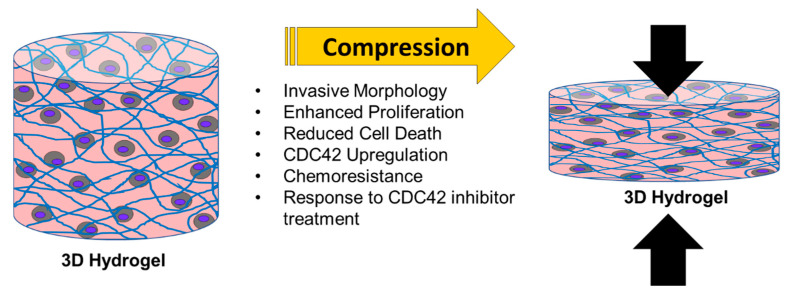Figure 5.
Summary of ovarian cancer response to compressive stimulus within a 3D agarose-collagen I hydrogel. Arrows indicate the applied compressive force (applied from the bottom) and its reactive force (represented by the top arrow). Ovarian cancer cells under compressive stimulus display an invasive morphology through their elongation and increase in aspect ratio. They also enhance proliferation and reduce overall cell death as shown in the immunohistochemical staining of ki67 and caspase-3 respectively. Compressive stimulus consistently upregulates CDC42 and chemoresistance to standard ovarian cancer drug treatments paclitaxel and carboplatin. Treatment with the CDC42 inhibitor ML141 facilitates chemotherapeutic response through enhanced cell death and reduced proliferation.

